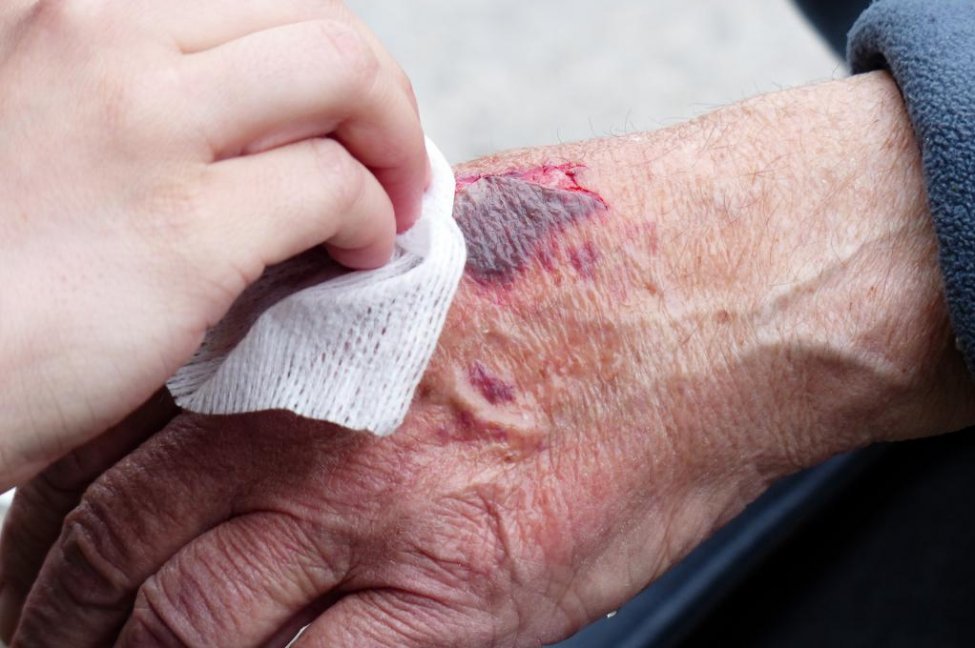
The device, which is equipped with a sensor designed to measure wound moisture levels and transmit the data to a nearby smartphone, without requiring removal of the bandage, was described in an article published Monday by Frontiers in Physics.
It is made with a conductive polymer called poly(3,4-ethylenedioxythiophene):polystyrene sulfonate, or PEDO:PSS, that is attached to a gauze using a technique called screen printing, the researchers said.
The sensor is then incorporated into the gauze with commercially available bandage materials.
The idea is that changes in the moisture level of the wound cause a change in the electrical signal measured by the sensor.
Maintaining optimal moisture levels is considered a possible key to allowing chronic wounds to heal, the researchers said.
"PEDOT:PSS is an organic semiconducting polymer that can be easily deposited on several substrates as a standard ink," researcher Marta Tessarolo said in a press release.
"We also incorporated a cheap, disposable and bandage-compatible RFID tag, similar to those used for clothing security tags, into the textile patch. The tag can wirelessly communicate moisture level data with a smartphone," said Tessarolo, a researcher in physics at the University of Bologna.
This information would allow "healthcare staff to know when a bandage needs to be changed," she added.
Similar technology has been used to create bandages that can automatically detect infections and release drugs to treat them while promoting healing.
Chronic wounds can be a source of significant suffering and disability for patients who experience them, according to the researchers.
Getting such wounds to heal is can be challenging due to many factors, including temperature and moisture levels.
Wound areas that become too dry may not allow for the generation of new tissue.
Conversely, those that become too wet can cause the tissue to appear white and wrinkly, as it does after a bath, according to the researchers.
Historically, if a healthcare professional wanted to check the moisture levels of a wound, they needed to remove the bandage, potentially damaging the delicate healing tissue.
The new technology addresses that issue, using a material that is biocompatible, disposable and inexpensive, the researchers said.
To test it, the researchers exposed the sensor-equipped bandages to artificial wound exudate, which is the liquid that seeps from wounds, and also tested different bandage materials and shapes.
The bandage was highly sensitive, providing drastically different readings between dry, moist and saturated conditions, they said.
However, the technology still needs to be optimized before it can be used in clinical practice, according to the researchers.
"We developed a range of bandages with various layers and different absorption properties and characteristics," University of Bologna physics researcher Luca Possanzini said in a press release.
"The idea is that each type of wound could have its own appropriate dressing, from slowly exuding wounds to highly exuding wounds, such as burns and blisters," he said.

 Previous page
Previous page Back to top
Back to top







